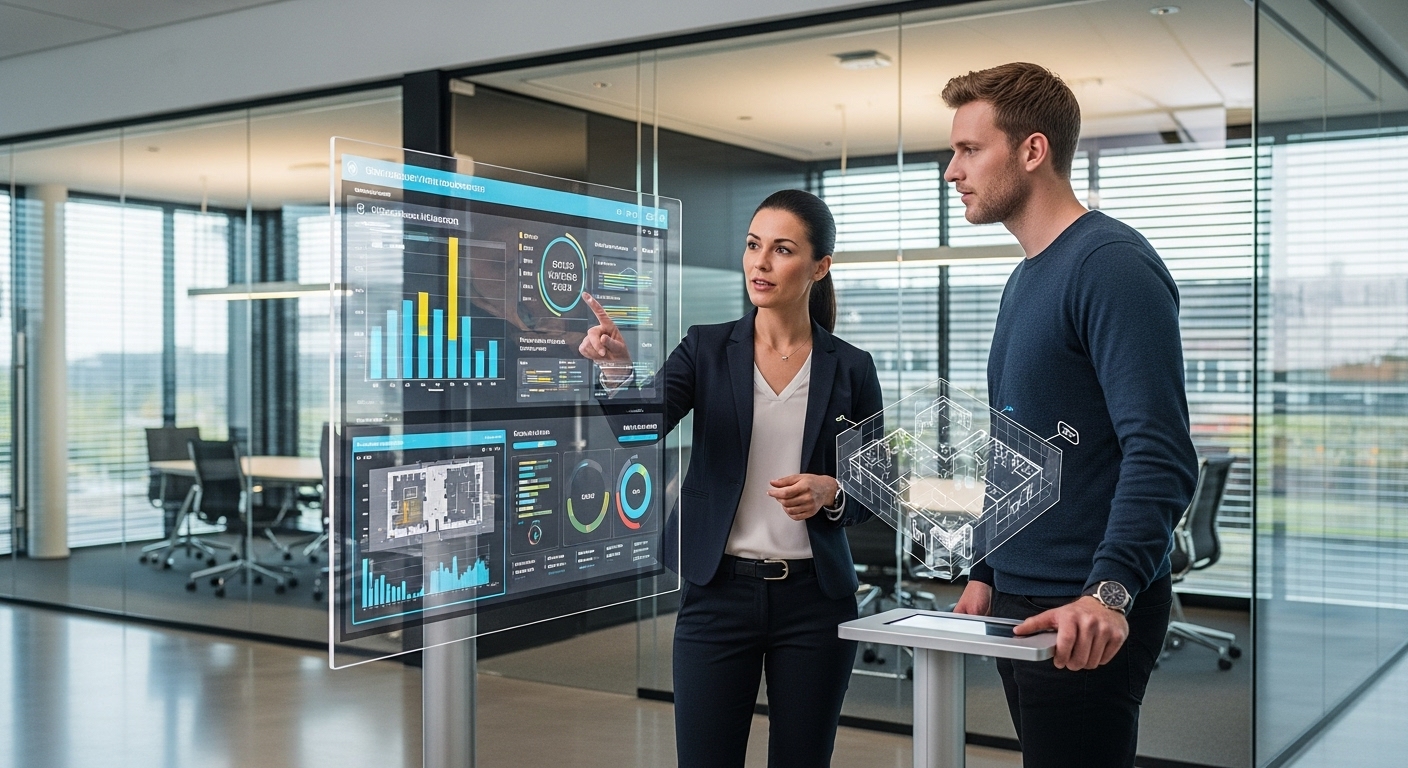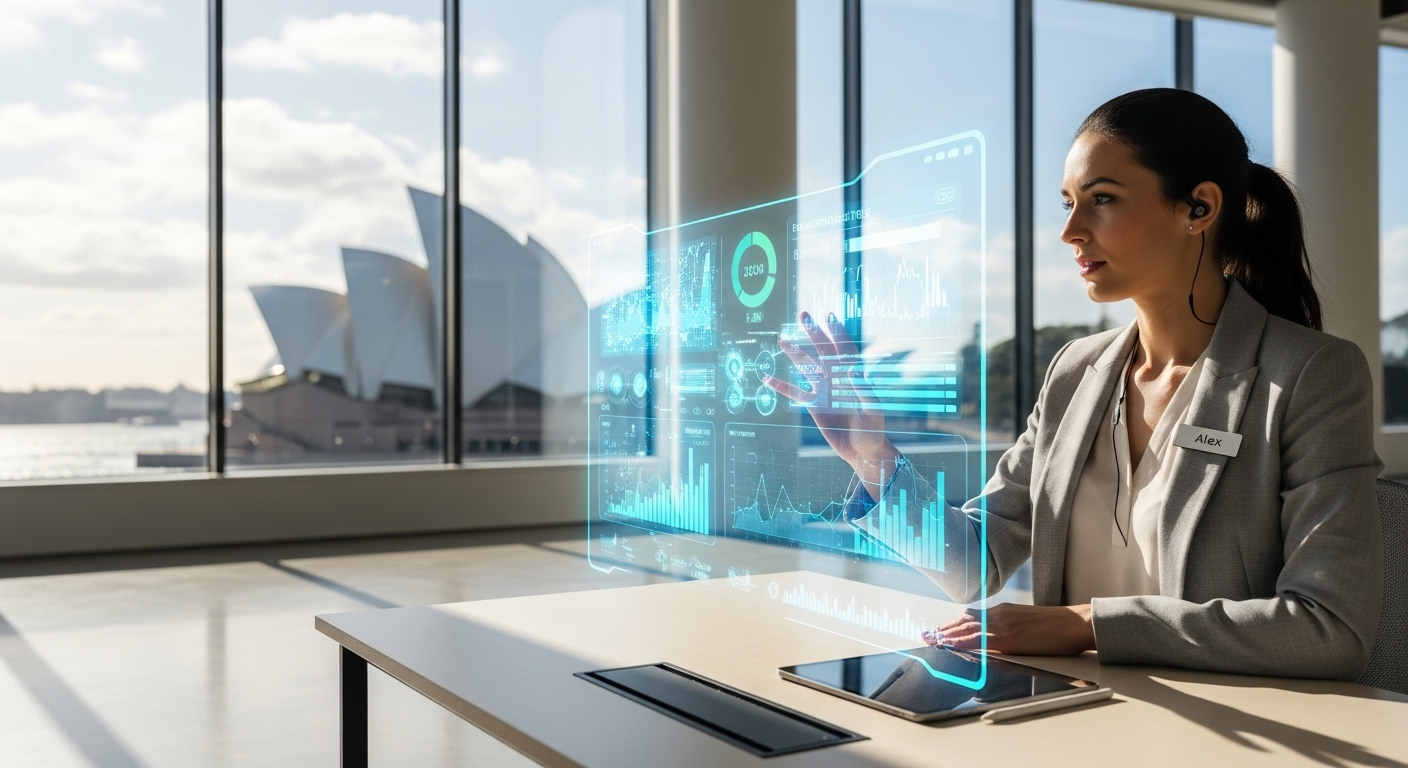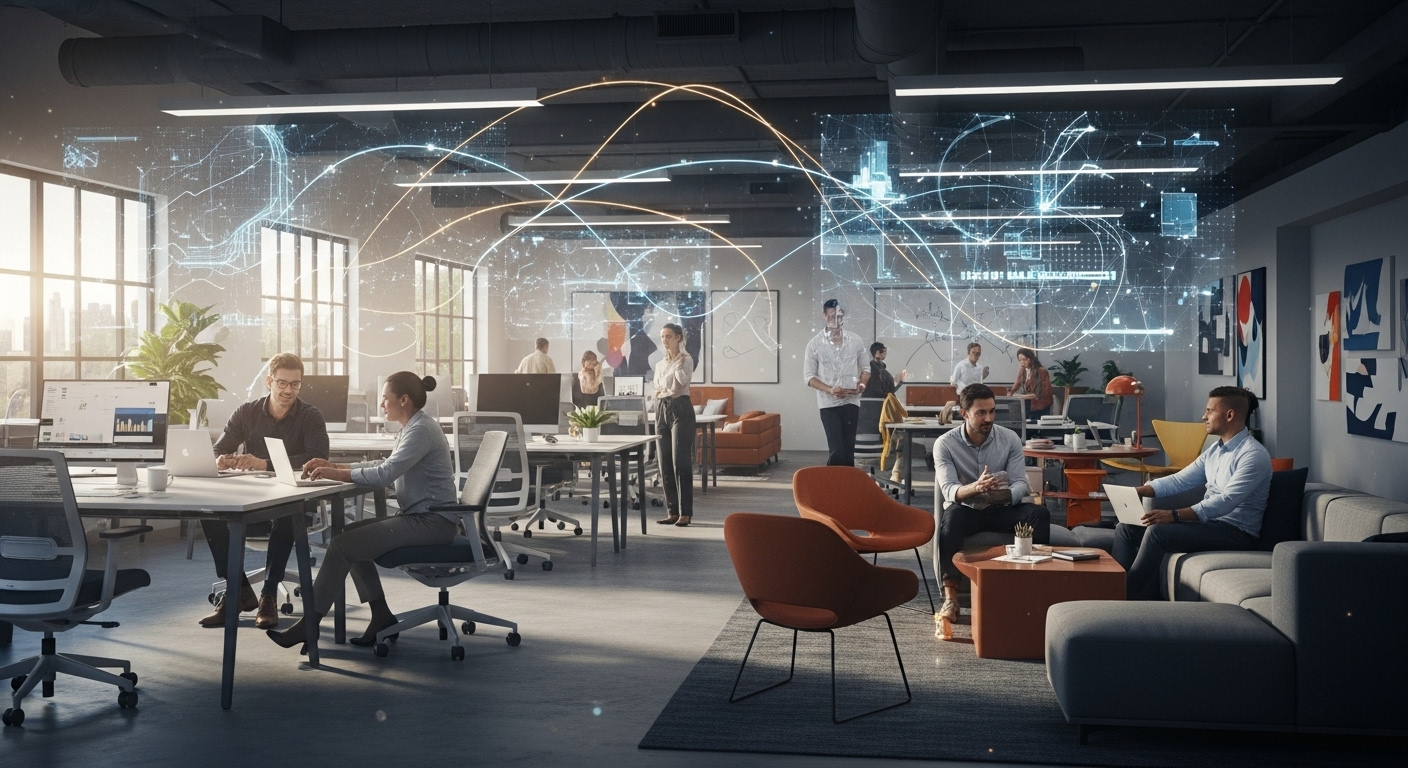The term ‘smart office’ often conjures images of futuristic gadgets and AI-powered conveniences. While smart lighting, automated blinds, and voice-activated assistants are part of the story, they represent only the surface. The true evolution in the future of work lies not in collecting isolated pieces of technology, but in weaving them into a single, cohesive ecosystem. Many organizations invest in piecemeal solutions, resulting in a fragmented experience that fails to deliver on the promise of enhanced productivity and efficiency. The real challenge—and opportunity—is integration. Building a truly smart office requires a strategic approach that starts with a solid foundation and prioritizes how different systems communicate and share data. This guide moves beyond the gadgets to provide a strategic blueprint for building a unified smart office ecosystem. We will explore the critical layers, from the foundational network infrastructure and environmental controls to employee-centric applications and the data analytics that drive intelligent decision-making, ensuring your workplace is not just technologically advanced, but genuinely responsive to the needs of your business and your people.
Laying the Foundation: The Network and Infrastructure Backbone
Before a single smart sensor or interactive display is installed, the invisible foundation of the smart office must be perfected: its network and IT infrastructure. This digital backbone is the single most critical element, as its failure renders every subsequent investment useless. A smart office ecosystem, with its thousands of connected devices—from HVAC sensors and security cameras to desk booking panels and digital whiteboards—generates a constant stream of data. This demands a robust, high-capacity, and ultra-reliable network. The current standard to aim for is Wi-Fi 6 or Wi-Fi 6E, which are specifically designed to handle high device density and provide the low latency required for real-time applications like video conferencing and IoT data transmission. Equally important is the physical cabling. Implementing a Power over Ethernet (PoE) strategy is a game-changer for smart offices. PoE allows a single Ethernet cable to provide both data connectivity and electrical power to devices, dramatically simplifying the installation of sensors, access points, and smart lighting systems. This reduces cabling clutter, lowers installation costs, and provides centralized power management. Scalability must be built in from day one. The architecture should be modular, allowing for easy expansion as more devices are added or new technologies emerge. A weak, overloaded, or insecure network will create bottlenecks, lag, and vulnerabilities, turning the dream of a frictionless workplace into a nightmare of technical support tickets and frustrated employees. Investing heavily in this foundational layer is not an optional expense; it is the prerequisite for a successful smart office transformation.
Unifying the Environment: Smart Climate, Lighting, and Energy Management
Once the network foundation is in place, the first visible layer of the smart office ecosystem is the physical environment itself. This is where technology directly impacts employee comfort, well-being, and the organization’s sustainability goals. Traditional offices rely on static, schedule-based systems for heating, ventilation, air conditioning (HVAC), and lighting. A smart office transforms these into dynamic, responsive systems. This is achieved through a distributed network of IoT sensors that gather real-time data on occupancy, ambient light levels, temperature, and even air quality (CO2 levels). This data feeds into a central building management system (BMS) that uses AI algorithms to make intelligent adjustments. For example, if sensors detect that a specific zone of the office is empty, the system can automatically dim the lights and adjust the HVAC to a more energy-efficient setting. Conversely, as a meeting room fills up, the system can increase ventilation to maintain optimal air quality. This automated responsiveness offers a dual benefit. Firstly, it creates a more comfortable and healthier environment for employees, which has been shown to directly impact cognitive function and productivity. Secondly, the energy savings are substantial. Instead of heating or cooling an entire empty floor overnight, the system operates with surgical precision, reducing waste and lowering utility costs significantly. Industry reports suggest that intelligent, data-driven HVAC and lighting systems can reduce a building’s energy consumption by anywhere from 15% to 30%, providing a clear and compelling return on investment while bolstering corporate sustainability credentials.
Empowering Employees: Frictionless Access and Resource Booking
A primary goal of smart office technology is to remove the small, daily points of friction that accumulate and hinder the employee experience. Navigating the physical workspace—from entering the building to finding an available desk or meeting room—should be effortless. This is where employee-facing smart technologies create the most immediate and tangible impact. The era of plastic keycards is giving way to mobile-first access control. By leveraging Bluetooth or NFC technology, employees can use their smartphones as secure digital keys to enter the building, access specific floors, and even unlock personal lockers. This is not only more convenient but also allows for more dynamic and secure management of access permissions. The frustration of finding a place to work, especially in a hybrid or hot-desking environment, is solved by integrated resource booking systems. Through a simple mobile app or a web portal, employees can see a real-time map of the office, view which desks and rooms are available, and book a space for the day or for a specific meeting. Smart booking systems go a step further. Meeting room panels can integrate with calendar platforms, automatically releasing a reserved room if the attendees don’t check in within a certain timeframe. This simple automation drastically improves the utilization of valuable meeting space, solving the pervasive problem of ‘ghost meetings’ that plague many offices. By putting control directly into the hands of employees, these technologies empower them with autonomy, reduce wasted time, and create a more fluid and responsive workplace experience.
Enhancing Collaboration: Intelligent Meeting Rooms and Digital Whiteboards
In the hybrid era, collaboration is the lifeblood of an organization, and the meeting room has become a critical bridge between in-person and remote employees. Smart office technology aims to make this bridge seamless, ensuring that remote participants are not just passive observers but active contributors. This goes far beyond a simple webcam and a conference phone. The intelligent meeting room is an integrated system designed for equity. It starts with AI-powered cameras that feature auto-framing and speaker tracking, which automatically focus on the person speaking, creating a more natural and engaging experience for those joining remotely. High-quality microphone arrays can distinguish voices from background noise, ensuring clarity. But the real transformation comes from software integration. Platforms that offer live transcription and translation break down communication barriers. The most significant leap forward is the interactive digital whiteboard. These large-format touchscreens replace traditional flip charts and allow teams to brainstorm, sketch diagrams, and annotate documents in real-time. Crucially, their content can be shared, edited, and saved by all participants, regardless of their location. This creates a single, persistent canvas for ideas, ending the practice of taking blurry photos of a physical whiteboard. When these elements are combined—intelligent video, clear audio, and a shared digital workspace—the distinction between being physically in the room and joining from afar begins to dissolve, fostering a more inclusive and effective collaborative environment for a distributed workforce.
The Brain of the Operation: Integrating Data for Actionable Insights
The true power of a smart office ecosystem is realized when the data from its disparate components is brought together and transformed into actionable intelligence. Each sensor and application—from the HVAC system and room booking panels to the access control logs—is a valuable source of information. However, in isolation, their value is limited. The ‘brain’ of the smart office is a central platform, often an Integrated Workplace Management System (IWMS) or a specialized workplace analytics platform, that aggregates and analyzes this data. This centralized view allows leadership to move from anecdotal evidence to data-driven decision-making about their real estate portfolio. For instance, by analyzing long-term occupancy data from desk and room sensors, facility managers can identify underutilized areas of the office. This insight can inform decisions to reconfigure the layout for more collaborative spaces, consolidate teams to a smaller footprint to reduce lease costs, or validate the need for expansion. The data can also reveal patterns in how employees use the space throughout the day and week, helping to optimize cleaning schedules, restock supplies more efficiently, and even inform cafeteria staffing. This continuous feedback loop between the physical space and its digital twin allows the workplace to adapt and evolve alongside the organization’s needs. It transforms the office from a static, sunk cost into a dynamic, flexible asset that can be continuously optimized for efficiency, cost-effectiveness, and employee productivity.
Securing the Ecosystem: Addressing Privacy and Cybersecurity
As an office becomes smarter and more connected, its potential vulnerability to cyber threats increases exponentially. Every IoT sensor, smart display, and connected camera represents a new endpoint on the network—a potential entry point for malicious actors. Therefore, building a secure smart office is not an optional extra; it is a fundamental requirement for protecting corporate data and employee privacy. A robust security strategy must be multi-layered. It begins at the network level with segmentation, a practice that isolates IoT devices on their own separate network. This ensures that even if a single sensor were to be compromised, the breach would be contained and prevented from spreading to the core corporate network where sensitive data resides. Device authentication is also critical, ensuring that only authorized and verified devices are allowed to connect. At the data level, all information, whether it is in transit between a sensor and the cloud or at rest in a database, must be encrypted. Just as important as cybersecurity is the transparent and ethical management of employee data. Organizations must develop and clearly communicate privacy policies that explain what data is being collected (e.g., anonymous occupancy counts vs. individual tracking), why it is being collected, and how it will be used. Building trust is paramount. Employees need to understand that the goal of these systems is to improve the collective work environment and operational efficiency, not to monitor individual behavior. Without a proactive and transparent approach to both cybersecurity and privacy, the benefits of a smart office can be quickly overshadowed by security breaches and a breakdown in employee trust.
In conclusion, the journey to a truly smart office is a strategic endeavor that extends far beyond the deployment of interesting gadgets. It’s about architecting a deeply integrated and cohesive ecosystem where every component works in concert. The process begins with an unshakable network foundation, capable of supporting the immense data flow of a connected workplace. Upon this, layers of technology are built: responsive environmental systems that enhance comfort and sustainability, frictionless tools that empower employees with autonomy, and intelligent collaboration platforms that bridge the gap between physical and remote teams. The true intelligence of this ecosystem, however, lies in its brain—a central analytics platform that synthesizes data from all corners of the office, turning raw information into the strategic insights needed to optimize space, reduce costs, and refine the employee experience. Finally, this entire structure must be encased in a robust framework of cybersecurity and transparent privacy policies to protect the organization and build trust. By embracing this holistic approach, businesses can create a workplace that is not just smart in name, but is genuinely adaptive, efficient, and profoundly human-centric—a workplace truly prepared for the future of work.





